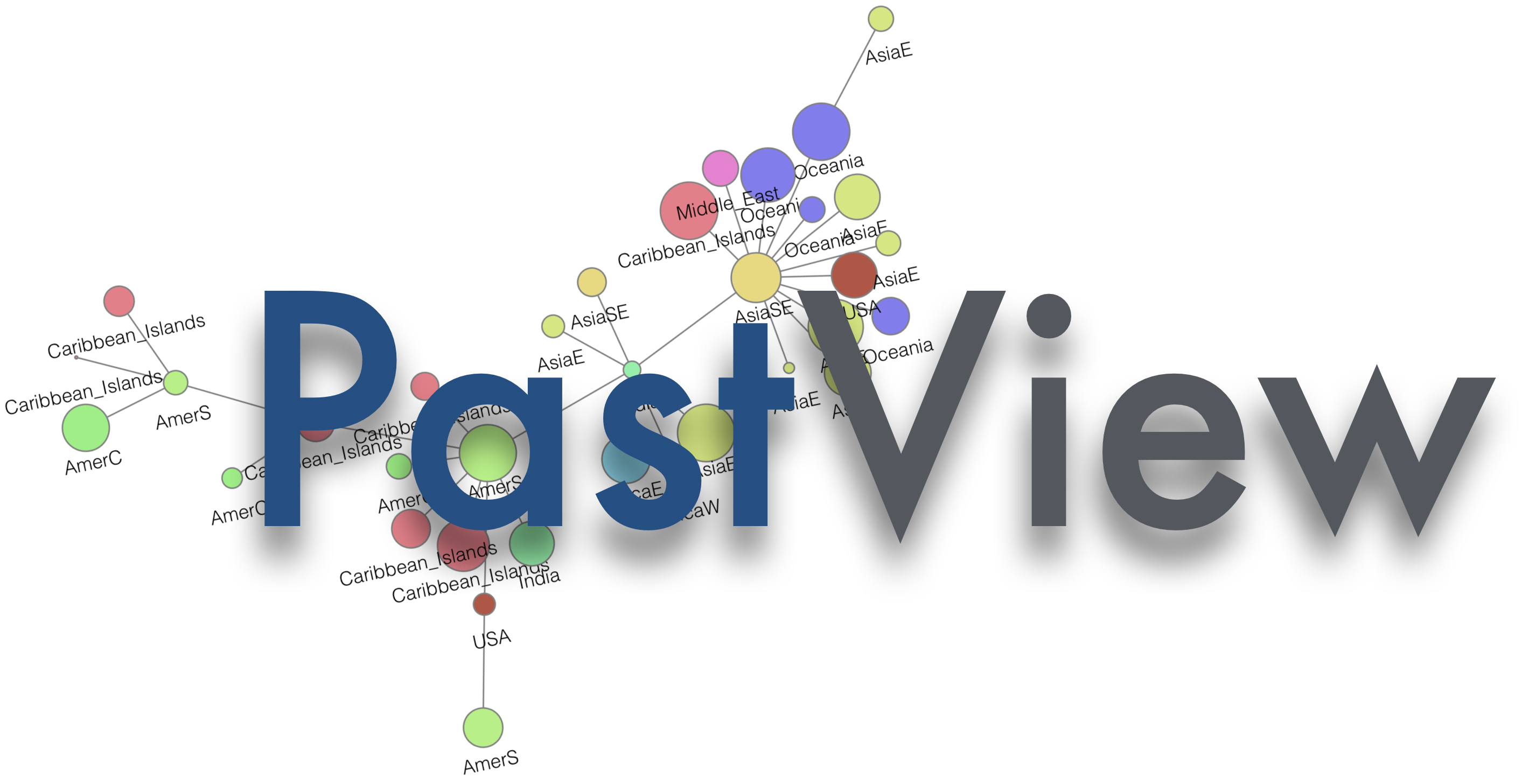
|
The PastWiew web interface provides transition maps of ancestral annotations from the combination of a phylogenetic tree with extrinsic traits.
A transition is a change in ancestral annotation between subsequent nodes of a rooted phylogenic tree (Top-Down reading).
A summary view of all transitions observed in the tree is called a transition map.
Transitions maps are used to decipher evolutionary scenarios in various research fields such as phylogeography, epidemiology, and ecology.
PastView is also available publicly as a standalone software on www.pastview.org.
Contact: francois.chevenet@ird.fr
|

